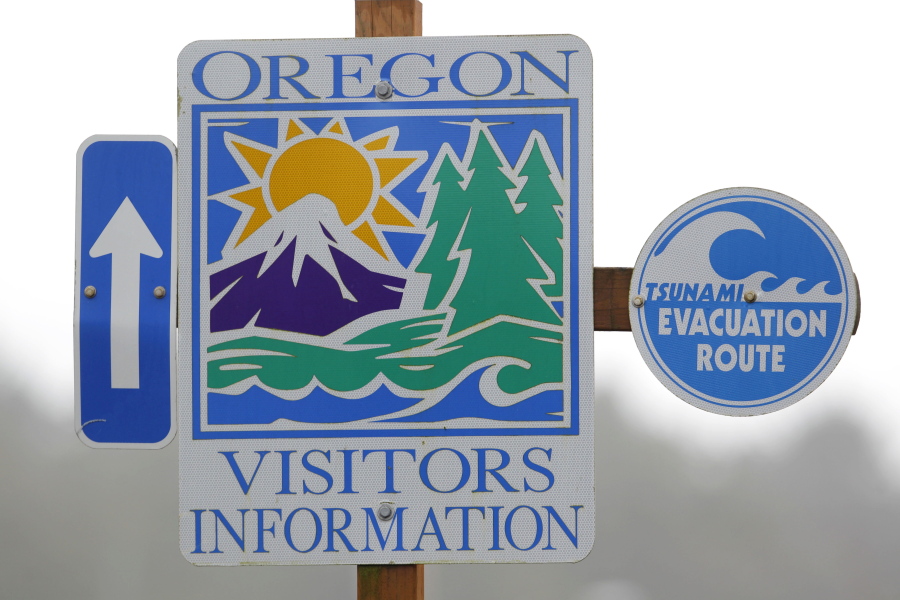The Big One — a catastrophic earthquake — is coming. When? Where? How destructive will it be? Scientists would love to be able to answer these questions, but they’ve been humbled by earthquakes too often. The Earth shakes unpredictably. There’s chaos in the mix.
Geophysicists can create hazard maps that show known faults and the probability of an earthquake in the coming decades. That’s not the same thing as predicting an earthquake. It just tells you to live in a reinforced building, brace your bookshelves and stash batteries for an emergency.
Even the famous San Andreas Fault in California, which generated the earthquake that devastated San Francisco in 1906, is stubbornly enigmatic: It could break next week or in 100 years.
But people are still trying to crack the earthquake code. Scientists based at Los Alamos National Laboratory published two papers Monday in the journal Nature Geoscience reporting what they say could be a breakthrough in predicting earthquakes. One paper emerged from laboratory research. The other was focused on subtle seismic signals along the Cascadia subduction zone off the coast of the Pacific Northwest.
In the laboratory-based paper, the scientists described how they used big data sets and a form of artificial intelligence called machine learning to study rocks put under pressure in a lab at Penn State. The experiments looked closely as “slow slip” vibrations that preceded a major break in the rock. This was an analog to what happens in nature, where, deep below a subduction zone, relatively soft rocks slip regularly, creating subtle vibrations that can be detected with sensitive instruments.
The new research reports that these tiny tremors aren’t just noise but, instead, carry information about when and with what magnitude the rock will break catastrophically in a fast-slip earthquake.
The breaking of the fault is “preceded by a cascade of micro-failure events that radiate elastic energy in a manner that foretells catastrophic failure,” the paper states.
Focus on Cascadia subduction zone
It’s a bold claim, with an important caveat that the results emerged in a laboratory setting. The next step is proving that this system “will translate at all to the Earth,” said co-author Paul Johnson, a geophysicist at the Los Alamos National Laboratory.
The second paper focuses on the natural world, specifically Cascadia. The subduction zone is off the coast of northern California, Oregon, Washington state and British Columbia. The Juan de Fuca tectonic plate is diving beneath the much larger North American plate, creating a trench along the seafloor. Subduction zones generate the most powerful earthquakes on the planet, far more violent than, say, the quakes created in a rupture of a strike-slip fault such as the San Andreas. Cascadia last ruptured in 1700 and generated a destructive tsunami.
The new paper says that researchers have been able to pick up the continuous signal of slow slip at the base of the subduction zone and separate that from the noise of the natural environment. This “continuous chatter,” the scientists argue, “may prove useful in determining if and how a slow slip may couple to or evolve into a major earthquake.”
This hypothesis is not easily tested. The “return time” for a Cascadia megathrust earthquake is about 500 years. It would be hard to test the hypothesis without a major earthquake, which might not happen in the lifetime of anyone alive today (but could also happen any minute now).
“What they really need is for Cascadia to rupture 20 times to test their hypothesis. That’s not going to happen,” said Susan Hough, a U.S. Geological Survey seismologist who was not part of the new research but has studied efforts to predict earthquakes.
Hough continued: “It’s a pretty big leap from acoustic emissions in the laboratory to nonvolcanic tremor seen along some subduction zones. Maybe machine-learning approaches will finally make headway on the earthquake prediction problem, but the jury is out, and I expect it will stay out for a while.”
Johnson and his colleagues are optimistic.
“We’re more hopeful than we’ve ever been,” he said last week at the American Geophysical Union fall meeting in Washington.



